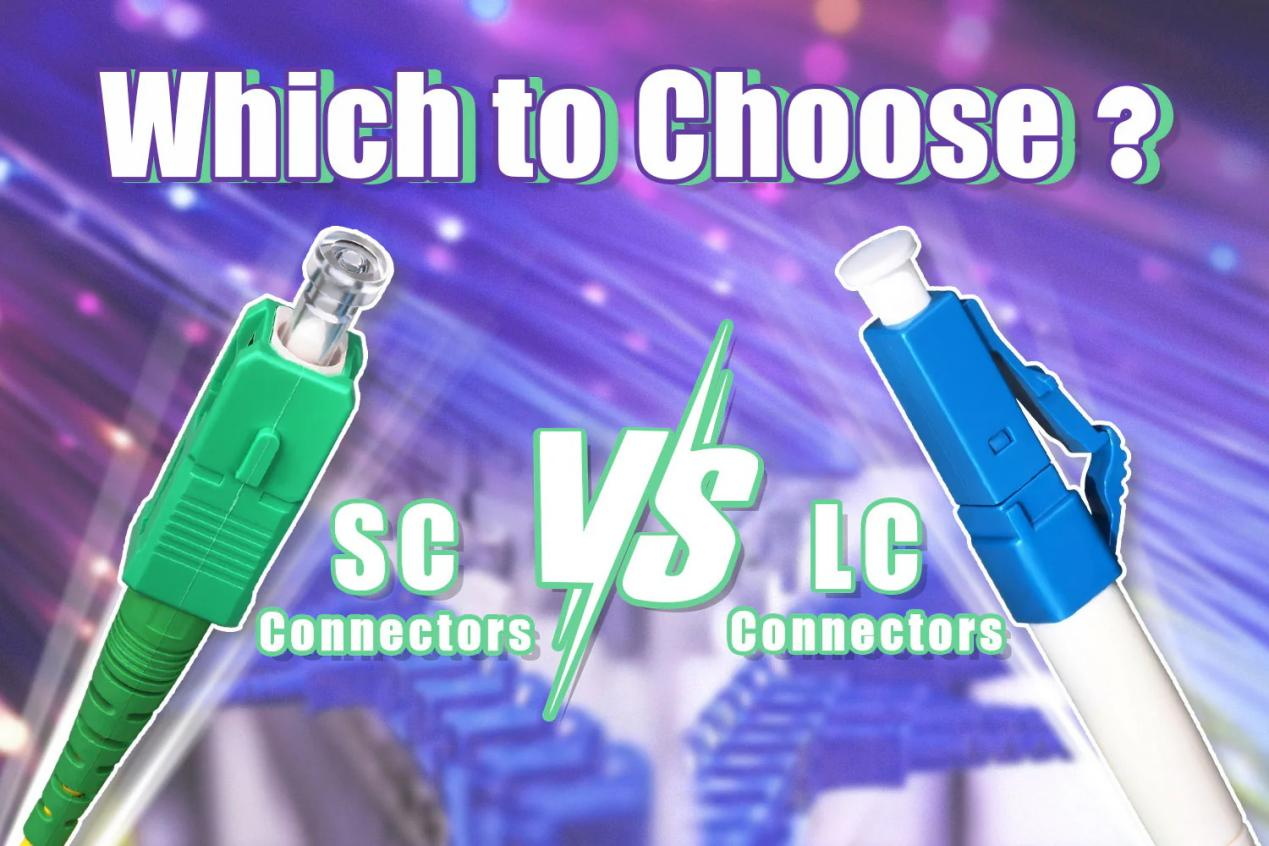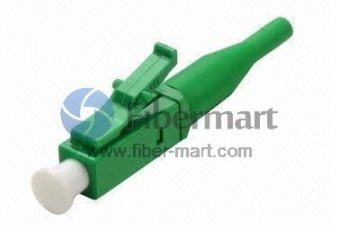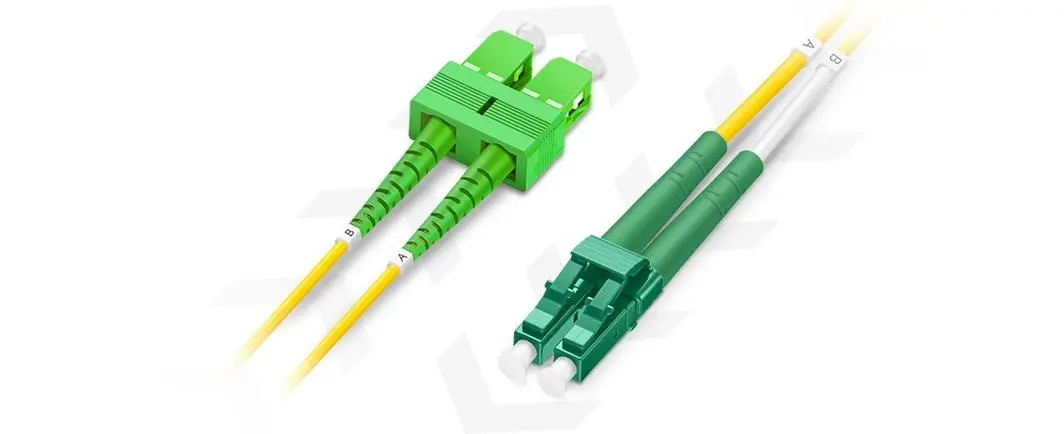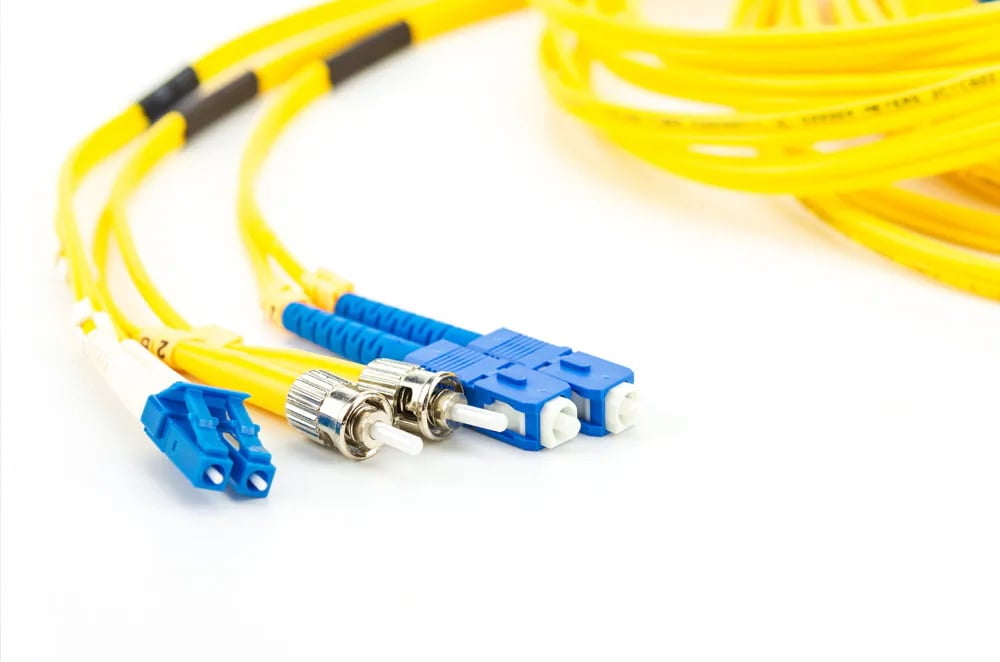Fiber optic connectors are crucial in fiber optic networks, responsible for the transmission of optical signals. Different types of connectors offer unique characteristics and uses, making the right choice essential for network performance. Fibermart will guide you through the features and applications of both LC and SC connectors, providing useful criteria for your selection.

Overview of Fiber Optic Connectors
Fiber optic connectors provide efficient and reliable connections between fibers. Their structure includes a ferrule and the connector body, with the ferrule being crucial for aligning fibers to ensure optical signal transmission. LC and SC are among the most common types of fiber optic connectors on the market.
If you're new to fiber optic cables, we recommend reading: How Do Fiber-Optic Cables Transmit Data?
Introduction to SC Connectors
Developed by NTT Labs in the mid-1980s, SC connectors were among the first fiber optic connectors. They feature a 2.5 mm ceramic ferrule and a simple push-pull locking mechanism. Due to their high reliability and ease of use, SC connectors are widely used across various network fields.

- Ferrule diameter: 2.5 mm
- Locking mechanism: Push-pull
- Mating cycles: 1,000 times
- Applications: Data communication, internet, cable TV, and EPON, etc.
Introduction to LC Connectors
Developed by Lucent Technologies in 2000, LC connectors use a 1.25 mm ferrule, half the size of SC connectors. Their compact design is suitable for high-density wiring scenarios and features a latching mechanism, offering stable connections with low insertion loss.

- Ferrule diameter: 1.25 mm
- Locking mechanism: Latching
- Mating cycles: 500 times
- Applications: Data centers, high-density networks, SFP, SFP+, and XFP transceivers, etc.
Comparison of Fiber Optic Cable LC vs SC
Size and Density
The LC connector's ferrule diameter is 1.25 mm, half that of SC's 2.5 mm diameter. Hence, LC's design is more compact, suitable for high-density network environments such as data centers and server rooms. However, SC is easier to handle where larger connectors are needed.
Insertion and Return Loss
Insertion loss and return loss are important metrics for connector performance. Due to the smaller ferrule and modern manufacturing technology, LC connectors generally have lower insertion loss than SC connectors. As for return loss, both LC and SC connectors perform similarly, ensuring stable signal transmission.
Durability and Reliability
SC connectors typically have higher durability, withstanding up to 1,000 mating cycles; LC connectors, with their more compact structure, are slightly less durable, with about 500 cycles. However, in modern network environments, the number of mating cycles is often not a primary concern, making both connectors reliable.

Cost-Effectiveness
SC connectors have a simpler structure and lower manufacturing costs; LC connectors, with their more complex design, cost slightly more. However, LC connectors increase port density, offering better cost-effectiveness in high-density wiring applications.
Application Scenarios
SC connectors are suitable for more general fiber connections, like linking computers or Wi-Fi routers; LC connectors, due to their compact design and high performance, are commonly used in data centers, exchange centers, and other high-density environments, as well as with SFP, SFP+, and XFP transceivers.
Choosing Between an LC cable and an LC to SC fiber cable
Choosing the right type of cable depends on your specific application scenario and requirements. An LC cable is ideal for connections within the same type of connector framework, whereas an LC to SC fiber cable is essential when interfacing between different connector types.
Environmental Adaptability of Fiber Optic Connectors
Environmental adaptability is an important consideration when choosing fiber optic connectors. Although both LC and SC connectors can operate effectively in various environments, they perform differently in specific applications:
- Electromagnetic Interference Resistance: SC connectors, with their larger size and simpler structure, have a slight edge in resisting electromagnetic interference. LC connectors, though compact, might require additional shielding measures in high-interference environments.
- Mechanical Stability: The push-pull design of SC connectors provides very stable mechanical connections, which is beneficial in environments with significant mechanical vibrations. In contrast, the latching design of LC connectors, though compact, may not be as robust in extreme mechanical applications.
Optical Performance Comparison
Optical performance is also key in evaluating fiber optic connectors:
- Insertion Loss: Both LC and SC connectors can provide low insertion loss, but due to the more refined design of LC connectors, they may perform better in some high-precision applications.
- Return Loss: LC connectors generally offer higher return loss performance, which is an advantage for systems requiring high transmission quality.
Installation and Maintenance Comparison
When choosing connectors, the ease of installation and maintenance is also very important:
- Usability: The push-pull design of SC connectors makes them extremely convenient for plugging and unplugging, especially in environments with ample space. However, LC connectors, suitable for high-density installations, might require more meticulous handling in compact spaces.
- Maintenance Costs: Due to their mature structure and technology, SC connectors generally have lower maintenance costs. The complex design of LC connectors may lead to higher maintenance costs, especially in scenarios requiring frequent connection adjustments.
Compatibility and Future Prospects of Fiber Optic Connectors
Conclusion, Fiber-MART.COM
Ultimately, the choice of connector depends on your specific application scenario and requirements. If high-density wiring or stable low insertion loss connections are needed, LC connectors would be a better choice. For more general network connection needs, SC connectors, with their lower costs and reliable connectivity, are more suitable. Please consider your application requirements and budget when choosing the most appropriate fiber optic connector.















No comments have been posted yet.